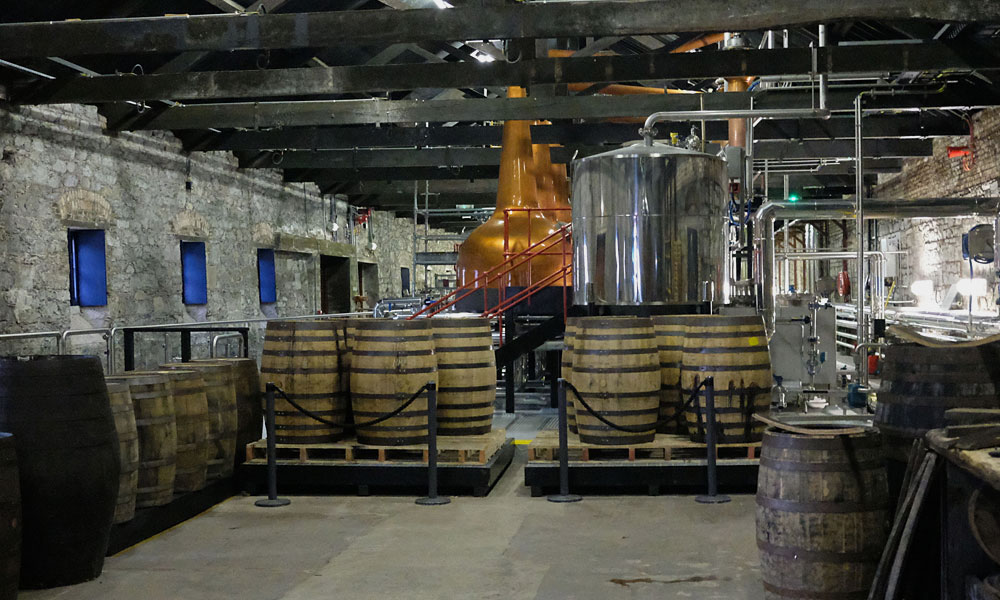For nearly 240 years Jameson has produced some of the best and highest selling Irish whiskey in the world. What we respect about the brand—aside from their products, of course—is that through the good times and bad, they never cut corners and never sacrificed their standards of quality to save a quick buck.
While you might know the general process behind making Irish whiskey, we wanted to delve a little deeper to find out exactly how the process works. So, we went with Jameson to their distillery in Midleton, County Cork, and spoke to Jameson International Brand Ambassador and Head Tutor of the Jameson Whiskey Academy Ciarán O’Donovan to learn more.
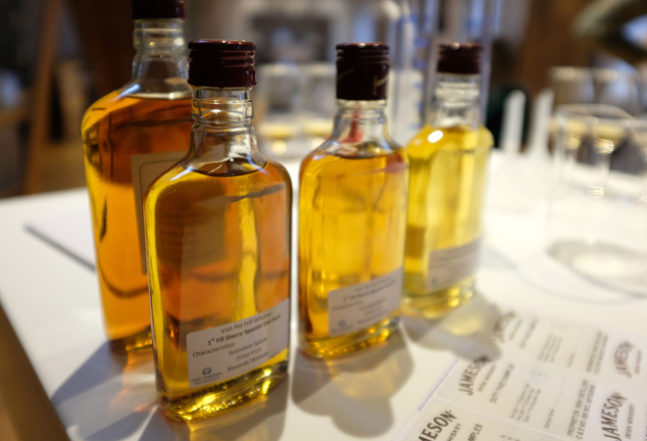
A Brief Overview
The majority of Irish whiskeys (something like 90%) are a type of blended whiskey made from pot still whiskey and grain whiskey. To be considered a pot still whiskey, the whiskey must be made from a mash bill of at least 30% malted and unmalted barley and distilled in pot stills, which are those big shiny copper stills you see in every marketing shot of a distillery. This type of whiskey gets the added distinction of being Single Pot Still Irish Whiskey if it is distilled in only one distillery. You can also only call your whiskey an Irish whiskey if it’s been distilled in Ireland, then aged on the island for no less than three years. Jameson follows all these steps.
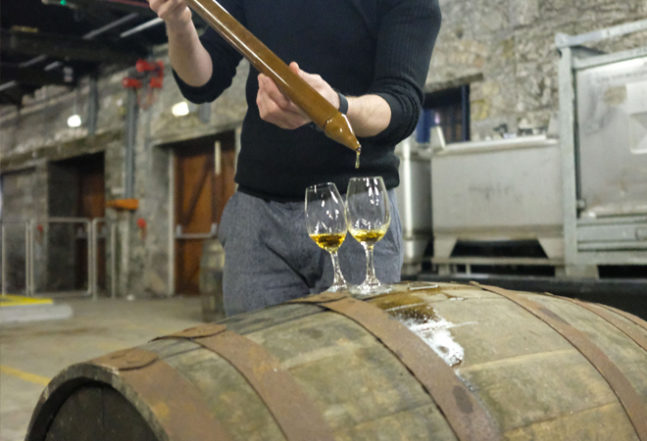
“Barley is Like Our Grape”
Jameson sources their barley from Southern Ireland, all within 50 or so miles or so from the Midleton site. They work with around 200 smaller farmers, and source the two-row spring barley from plots of land anywhere from 15 to 700 acres. These farmers plant the barley in mid March or early April, for a late summer harvest in August and September.
Jameson also uses a mix of malted and unmalted barley in their booze in a single pot still. It can’t be called a single malt, because single malt is a term used to refer to liquids made using only malted barley. But it gets the distinction of single pot because it’s all made in a pot still under one roof in Midleton. O’Donovan told us they prefer a mix of malted and unmalted barley because the “green” barley makes the whiskey a little spicy, a little grainy, and a little barley-er. It’s a method they’ve used for over 200 years, and they’re one of the few companies left on the planet that still does it.
On the other side of the barley is maize, a fancy word for corn. According to O’Donovan, because Ireland’s cooler, grey skied climate can’t support sun-hungry corn crops, the distillery has to get corn from Spain’s sun-rich Basque Country.
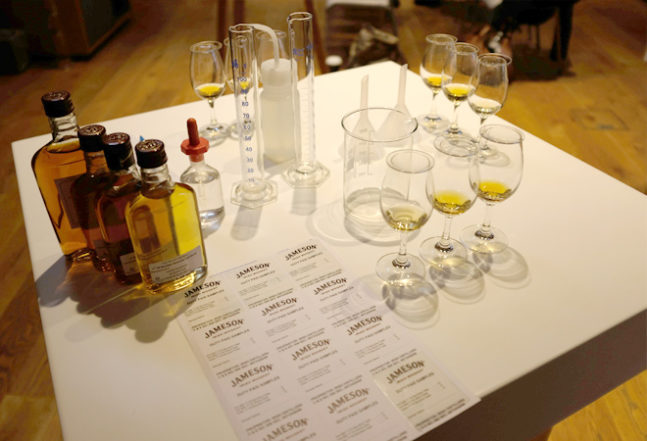
The Science of the Proper Distillation
Before the malted and unmalted barleys are mixed together to do their magic, you have to actually distinguish between the two. Essentially, the malting process involves tricking the barley into germination by washing it, steeping it in water for around 40 hours, and then letting it sit for a few days. When you see little sprouts coming from the grain, that’s the signal that the barley has been successfully malted and is producing easily fermentable sugars.
The germinating barley is then dried in a heat exchanger, where it is then combined with the unmalted barley to make “wort.” Anyone who’s dabbled in homebrewing should recognize that word. For those who haven’t, wort is the barley juice that results from steeping the malted and unmalted barley in warm water. After they separate the grain and the wort, leftover barley is turned into feed for livestock.
The wort is mixed with yeast and over the next 60 to 80 hours, the yeast consumes the fermentable sugars, producing carbon dioxide and alcohol. It’s now no longer wort, it’s wash. Basically a beer that’s anywhere from 10-12% ABV, according to O’Donovan. This wash is the stuff that will eventually result in Jameson.
This wash gets distilled three times, hence “Triple Distilled” on the label.
Its first time through results in a low alcohol spirit called “low wines.” These low wines are typically anywhere from 20% to 40% ABV, and are mixed with another liquid leftover from the prior distillation called “weak feints.” The low wine and weak feints mix is then put through the second copper pot still, called the feints still.
After the first thirty minutes of distillation in the feints still, the resulting alcohol distilled from the wash and weak feints is called the “heads cut,” and is set aside for a different step. The alcohol is far too harsh and volatile for consumption and is what caused the blindness scare with cheap moonshine.
Next comes the “heart cut.” This is the alcohol you want and you could have a perfectly pleasant time with it, as is. But because Jameson is looking for a smoother, more refined spirit, they send it, the spirits still, for a third distillation.
After the hearts, anything produced is called the “tails cut.” While the heart cut is sent to the spirits still, the heads and tails cuts are sent back into the weak feints receiver, where they will eventually be pumped into a new batch of low wines, and recycled through the process once more. They’re the “weak feints” we mentioned earlier.
After the heart cut is sent through the third pot still, the resulting alcohol—which is approximately 84.4% ABV—is called “New Make Spirit.” The new make spirit is cut with water via reverse osmosis until it’s approximately 63.3% alcohol, when it is then put into a cask and stored for a period of three years. That takes care of the pot-still whiskey.
Of course, that’s just one half of the equation. The grain whiskey they use for their blend is also triple distilled from a mash bill that’s roughly 80% maize and 20% barley. Rather than getting distilled in a copper pot still, it’s processed through column stills, far more complicated, more efficient, less traditional stills. By the time it gets done distilling, it’s 94.4% ABV. It’s cut with water through the same method they use for the pot still down to about 70% ABV, casked, and aged for three years.
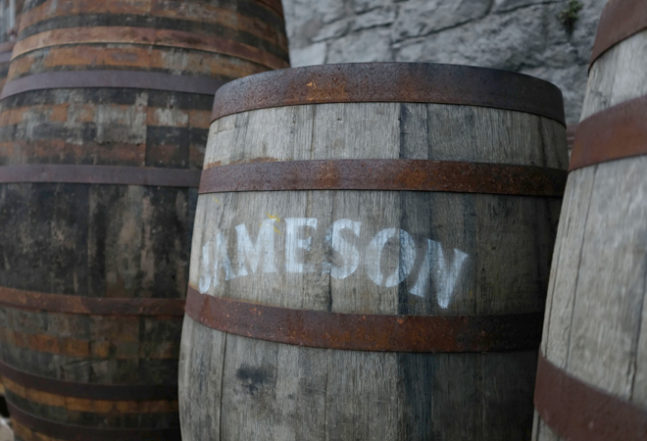
The Art of the Proper Blend
We mentioned above that in order for the liquid in the casks to be considered real Irish whiskey, it must be matured on the island of Ireland for a period of no less than three years—no exceptions. O’Donovan assured us that Jameson matures their barrels well after the three-year mark, but the exact age is a secret (Although, according to their website, their maturation period is between five and seven years).
Of course, it’s not as simple as throwing the grain and pot still whiskeys into a wooden barrel and letting them sit for a while. While these whiskeys age, they pick up different flavor notes from the casks in which they’ve been stored, which is why it’s very important to select the right casks. According to O’Donovan, Jameson matures their whiskeys in various mixes of American oak bourbon barrels and Spanish sherry barrels—again, the ratio of American bourbon barrels to Spanish sherry barrels is a secret.
Once the two whiskeys have reached their perfect maturation age inside their perfect barrels, they’re blended together in a process referred to as “marrying.” Of course, as you’d expect, O’Donovan wouldn’t give us the exact percentages on the blend of grain to pot still, either.
From there, the blend is bottled, boxed, and shipped to bars, restaurants, and liquor stores all over the world.

